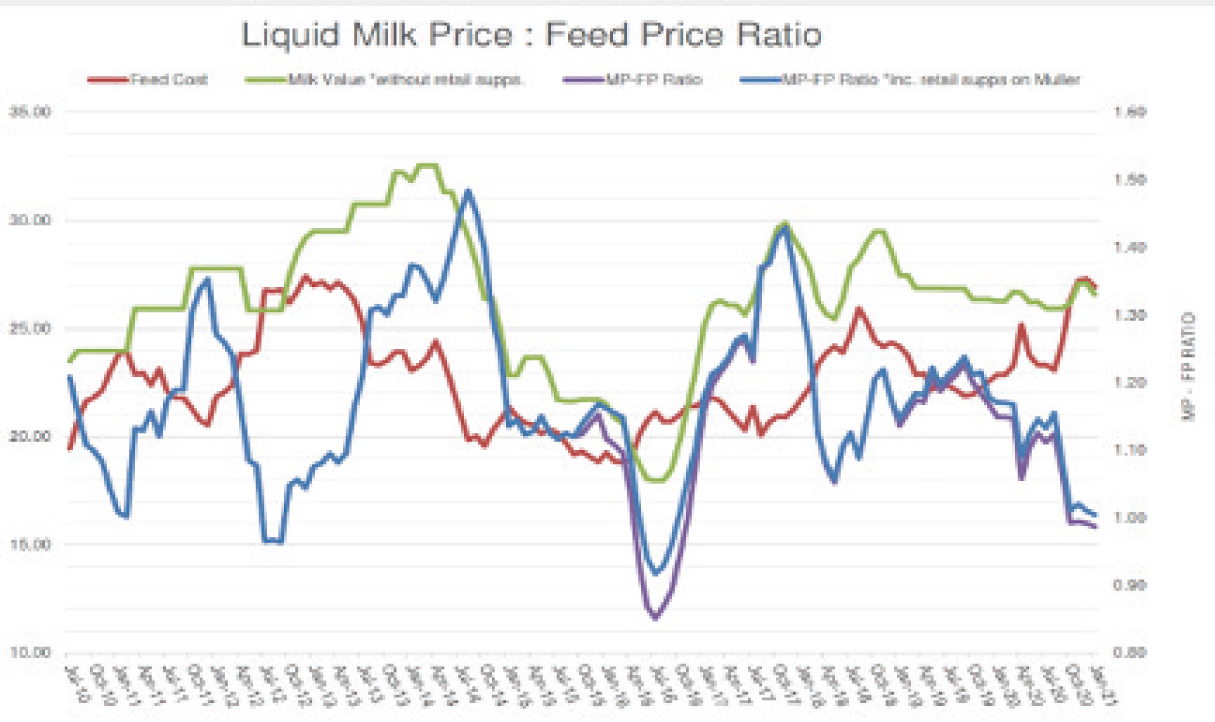The table to the right tracks 11 years of milk price to feed price ratio up to January 2021 (purple line).
In short, if one litre of milk was 25 pence and 1kg of feed was 25 pence the ratio is 1:1. It is generally accepted that below a ratio of 1:2 there is no incentive to feed for milk.
We can see that as the feed price (brown line) increases but the milk price remains static the MP:FP ratio falls and that is the situation for Q1 and Q2 of 2021.


Beware of cutting corners
Putting the economics to one side, a dairy cow has a genetic potential to produce milk and they will try their best to achieve this whether we choose to feed them appropriately or not. We must meet a cow’s nutrient requirement and feed for genetic potential or risk a negative effect to health or milk production. The skill for a nutritionist during challenging periods of feed cost is to manage the purchased feed cost per litre to mitigate the impact, whilst not sacrificing health or yield.
5 Strategies for mitigating rising feed costs
- Forage to concentrate ratio – consider the scope for increasing the forage fraction of the ration and decreasing concentrate. Do you have sufficient forage stocks for this approach and indeed, is the forage of sufficient quality to replace concentrate without affecting milking production? There is a limit to the amount of forage dry matter intake and therefore this needs to be checked in advance with Wynnstay’s rationing software.
- Increase milk output – one litre of milk increase generally offsets about £40 per tonne concentrate cost. Without adding cost to the ration consider any strategy likely to increase dry matter intake – increase push-ups at the feed barrier, feed twice per day if feeding once, and increases maize fraction of forage (if available). Consider products that improve rumen fermentation or ration energy – Biosprint Yeast or UFAC fats such as Dynalac.
- Wynnstay Liquid Feeds – QLF Liquid protein and sugar options are very attractive versus current feed protein markets. Consider concentrate replacement with liquid feed.
- Grazing – Fresh grass is the cheapest feedstuff available – if you normally graze your cows, can the grazing platform be increased this year? If you do not turn out, could low yield in calf cows be turned out?
- Cull non-productive – Get rid of passengers. Cull on fertility and lameness initially, use milk records to help with these decisions. Chronic lame cows (failing to cure after three consecutive trim events) should be removed from the herd. Look at chronic high cell count animals and their history.












